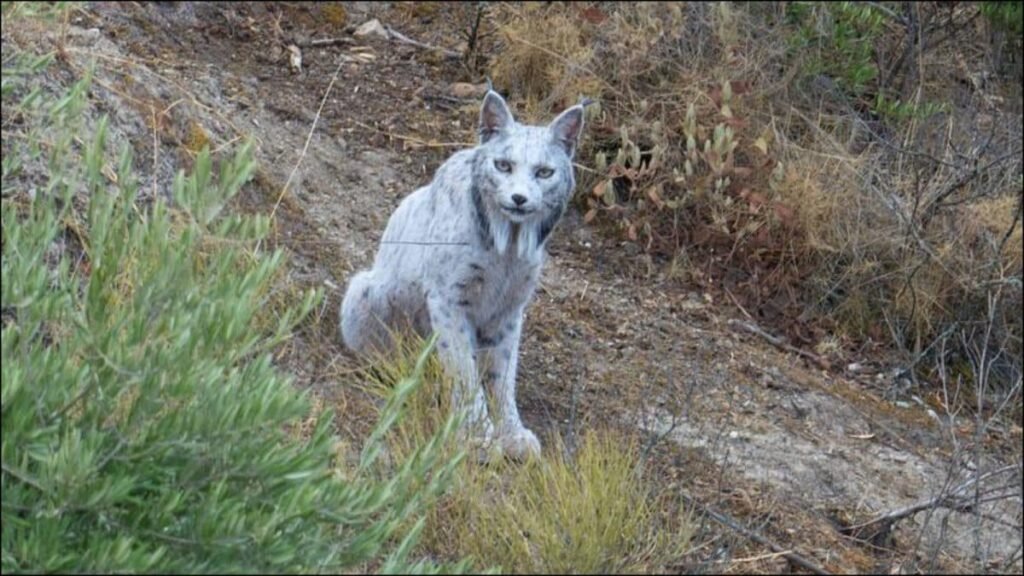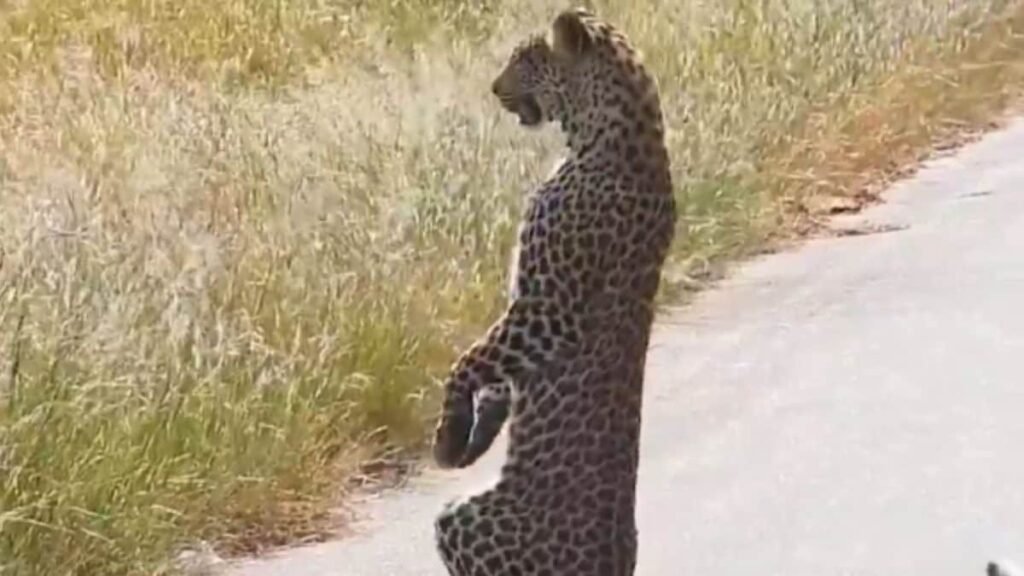Latest update:
The lynx spotted in Spain is leucistic, a condition that causes a lack of pigmentation in the fur, but not in the eyes, causing the ghostly appearance of the big cat.


The Iberian lynx has been spotted in Spain. (Image: X)
A photographer in Spain has discovered what he believes is the world’s first white Iberian lynx, which is extremely rare even among the world’s rarest cats. The leucistic animal is practically a legend, as most species are usually brown or white in color.
The lynx spotted in Spain is leucistic, a condition that causes a lack of pigmentation in the fur, but not in the eyes, causing the ghostly appearance of the wild cat. Already classified as an endangered species in the world, the lynx is extremely rare.
According to the World Wildlife Fund (WWF), the Iberian lynx is heavily spotted and weighs about half the weight of the Eurasian species, and has long legs and a very short tail with a black tip. Its coat is tan with dark spots and it bears a distinctive “beard” around its face and prominent black ear tufts.
The miraculous discovery is thanks to large-scale conservation efforts to protect the Iberian lynx, which was saved from extinction after its population dropped to fewer than 100 big cats in 2002. However, conservationists have warned that although the white fur looks great on camera, it is a terrible camouflage in the wild.
The Internet was amazed by this sighting and admired the majestic lynx. One user said: “What an amazing find! This white lynx is a powerful symbol of how resilient nature is when we work to protect it.”
“What a beautiful creature,” one person wrote on Reddit. One netizen commented: “What an amazing testament to proper conservation – the Spanish Iberian lynx has recovered from the brink of oblivion, and is now giving us this ghostly marvel roaming the Andalusian wilds.”
A fourth person wrote: “It seems that at any random moment it could sprout wings and conquer continents.”
The Iberian lynx began to decline steadily during the 20th century after being hunted by hunters, and by 2002, only two isolated breeding populations remained in the world, totaling about 100 adults with 25 breeding females.
However, intense joint efforts by Spanish national and regional administrations, various NGOs and EU-funded life projects have been able to bring this species back from the brink of extinction. The 2015 census showed that there are 404 adult lynxes in the world, and their number will reach about 2,000 by 2025.
However, progress is at risk after several regional governments in Spain responded to pressure from farmers and fishermen to prevent the reintroduction of the species into the wild. Opponents of the lynx conservation program have claimed that wild cats prey on livestock, as well as rabbits and partridges, The Guardian reported.
Avik Banerjee is Senior Sub Editor at News18. Based in Noida, Avik holds a Master’s degree in Global Studies, has over three years of experience in digital media and news curation, and specializes in international affairs… Read more
29 October 2025, 9:30 PM IST
Read more













